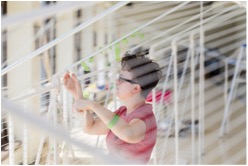Now Playing
Current DJ: CHIRP DJ
Drasii Memory Delta from Spirito Celeste (FPE) Add to Collection
Requests? 773-DJ-SONGS or .(JavaScript must be enabled to view this email address)
If someone handed you a survey asking what you could share with others in your neighborhood, what would you say? Now is your chance to show off your green thumb and urban farming skills. This is your art. Or maybe you have nunchuck skils, bowhunting skills, or computer hacking skills. Okay forget the last one. You know what you have that nobody else does. Get out there and share it.
“I believe in the idea that we are all artists, we just have different modes of expression, whether we realize it or not. Creating a piece of art can often feel like putting a piece of yourself out in the world and there is much uncertainty surrounding it, but the more one becomes comfortable with that uncertainty through repetition, the future becomes filled with many more choices than one could have thought possible.”
This is Amie Sell. She works as a project assistant to designers and architects where she’s able to contribute her visionary art-thinking abilities and often gets “very lucky to be connected to some amazing teams”. Check out one project, a floating greenhouse, called The Looper.
“Individually we can come up with good ideas, but groups with diverse visions and skills are where the best designs are born,” she said. “In school we learn about individual artists or historical figures that did everything on their own, but when you peel back the surface, there almost always teams, collaborators and instigators that drive the creation.”

Amie stays committed to the path of an artist because it provides her the freedom to explore ideas and foster collaboration with other artists.
There's a Chicago architecture firm's lobby, which is modeled after the ideal white cube gallery, that needed fresh perspective and Amie was asked to be a curator for the space. Through the rotating showings of work, Amie's goals are to bring inspiration from local artists and coax people into feeling comfortable with their art.
When asked how we can bridge art and science as they relate to society, Sell gives us this exchange:
Sell: Curiosity and truth-seeking are the common threads that run through art and science. When Watson & Crick envisioned the double helix shape of DNA, it took outside the box thinking to visualize this for humanity to understand the concept. The linearity of the scientific method and the waves of imagination riff off of each other to create understanding.
CHIRP: How've you been able to express this understanding in your own work?
Sell: It started with the internal struggle of what these terms meant to me in context to a personal relationship. Then it began to materialize in a very methodical way of visiting every house that I lived in and capturing a picture of it – 25 or 26 at the time. Visiting each house caused my mind to move through them spatially and then to draw the floor plans and models of the spaces. The drawing and model making turned out to be very tedious and the lines between accurate model and distorted memory became blurred and, well lonely. I then started to explore the term in context to my community in the face of mass evictions and gentrification by actively studying the concept from social science and anthropological perspectives to broaden the context from my ‘self’. It has blown open my life in ways that I could have never imagined. Many collaborations and two installations, Home Sweet Home and Warm Memory were born out of this shift.
When looking towards our future, Sell says art and design shape everything in our human world, but the way it is valued is distorted by our economic system that relies on constant growth, mass production and efficiencies that create profit for few. What can we do better to locally and globally connect with each other? The answer is to change our value systems and powers that seek to oppress and destroy. Art and collaboration is a major part of the (r)evolution strategy.
“Working with young people gives me hope that a better world is actually possible,” Sell said. “I’ve seen art change the trajectory of many people’s lives on different levels. It opens doors to conceptual thinking that is lacking in our contemporary school environments and has the power to decontextualize traditional cultural constructs that repress personal expression.”
Are you feeling inspired yet? Here’s some final words of wisdom from Amie, and for more on her work, please visit www.amiesell.com
“Art is powerful, use it wisely and when art becomes business, be careful who you choose to accept money from and how they value you. They could be using you as a tool to push their agenda that could have unforeseeable negative impacts on your community, our Chicago community. Investigate who sits on the boards of art organizations. Do they align with your values? Also, if you move into a new neighborhood, do not start your own isolated art practice, gallery or collective. Get out and meet others that are already there building community through art. Artists are everywhere, creating everywhere - they just don’t always look like you.”
Next entry: In Rotation: Jackie Lynn
Previous entry: What’s Up at CHIRP Radio (Week of May 9)